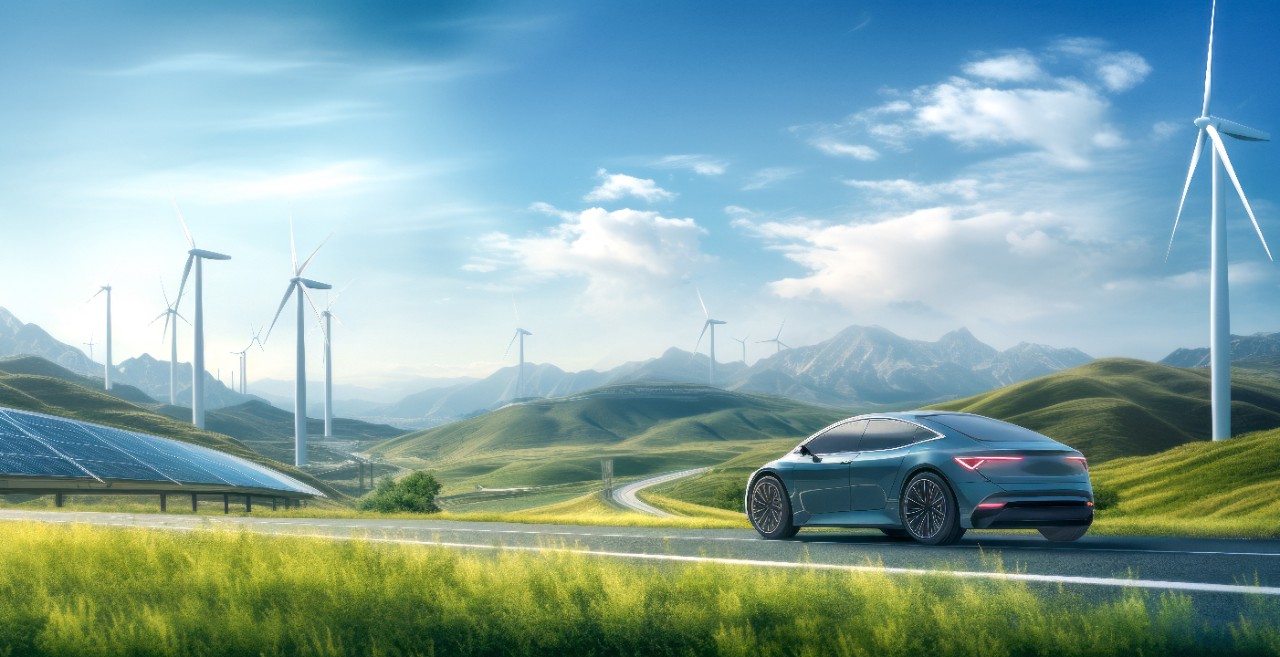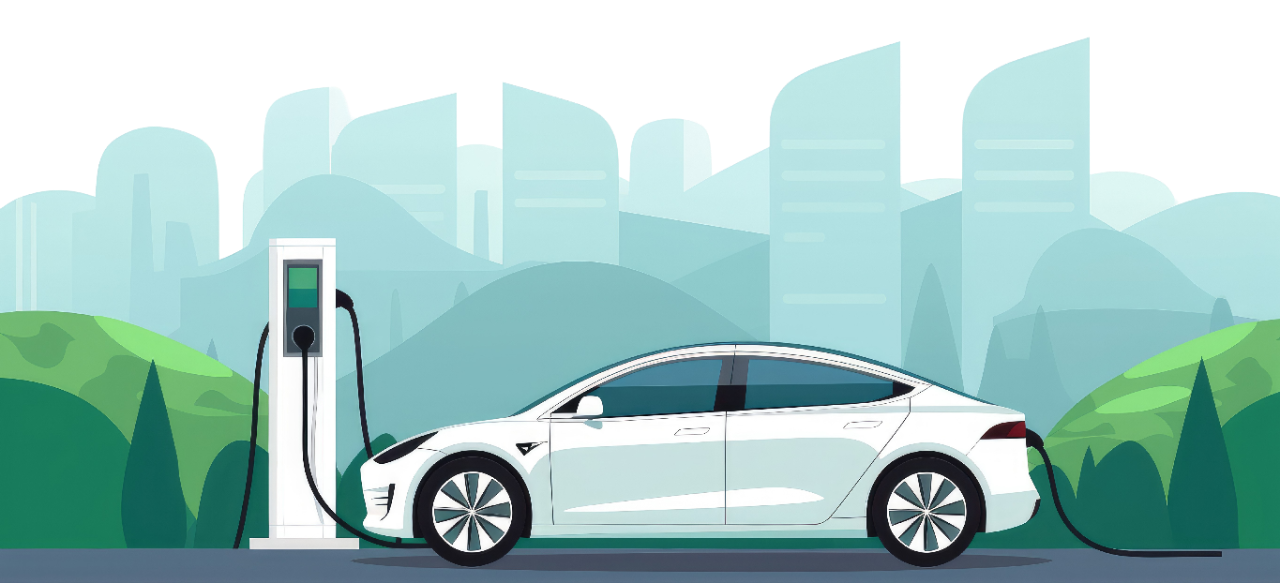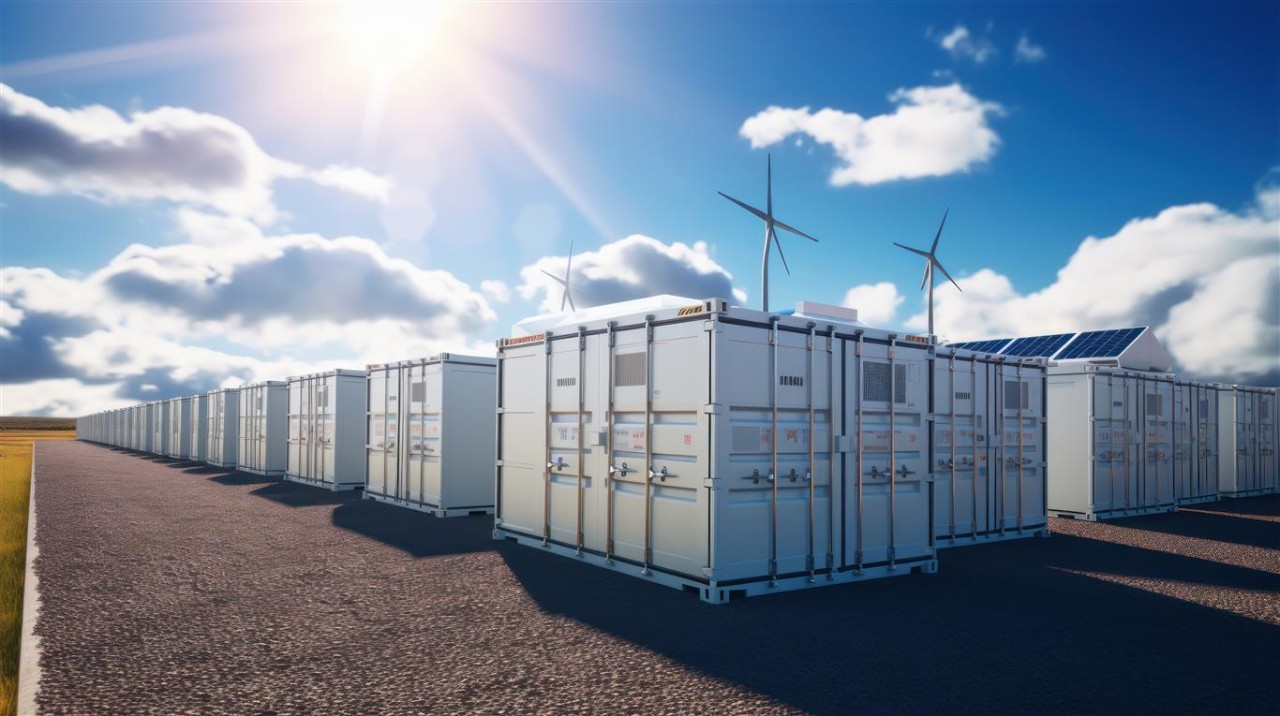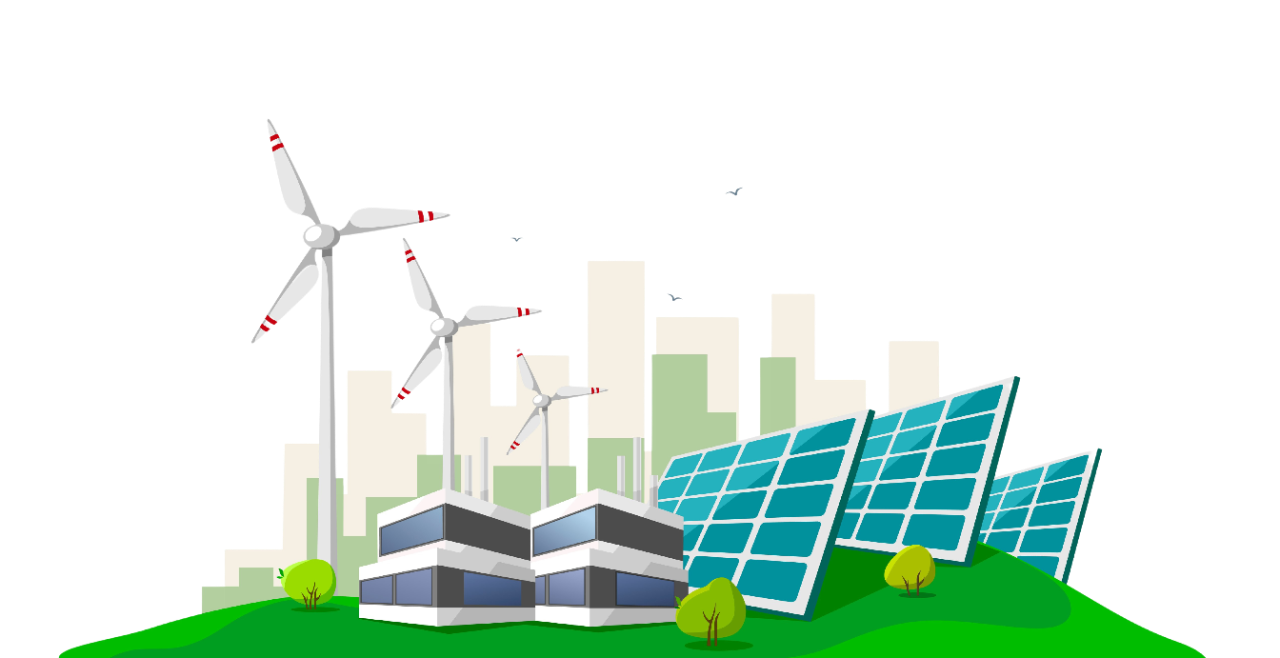The road to sustainability is one that humankind must urgently navigate. We have already made remarkable progress in decarbonising the way we live, travel and work – but are we going fast enough to outpace climate change? In this blog post, I examine the achievements and challenges facing us as we embrace electric vehicles, battery energy storage solutions and new technologies such as green hydrogen.
By T.K. Chiang, CEO, CLP Holdings

Technology and innovation have transported us into a new realm of energy possibility that was unimaginable only a few years ago. We now stand on the threshold of sustainability with a green future almost within our grasp – but a great deal more remains to be done if we are to secure it.
There is no question we have made great progress on decarbonisation with the significant development of renewable energy and other green energy sources to address the catastrophic impact of climate change. But helping our customers to decarbonise through electrification, in particular by promoting electric vehicles (EVs), is equally important. There are also other relevant technologies that are crucial to the success of decarbonisation, such as the development of energy storage facilities and other zero carbon fuels like green hydrogen. So the questions we should be asking ourselves are: Are doing enough? Are we moving fast enough?
For example, is transport being electrified quickly enough to reduce emissions by as much as we need to? Are battery energy storage systems (BESS) being used widely enough to make a real difference? And is the technology for green hydrogen on track to fulfil its transformative potential?
Those are the questions we cannot afford to ignore as we grapple with the global dilemma of how to achieve decarbonisation while balancing it with society’s need for energy security and economic stability.
Motoring ahead
EVs have come a long way since the Tesla Roadster was unveiled in 2008 as the first all-electric car capable of traveling more than 390 kilometers on a single charge. In 2023, EVs accounted for 18% of all cars sold globally, up from only 2% in 2018, according to the International Energy Agency (IEA).
The Paris-based organisation expects further strong growth in sales in 2024 with battery and hybrid models potentially accounting for one in five cars sold globally.
There are grounds to believe we could be approaching an inflection point where the growth in sales of EVs shifts up a gear from impressive to exponential. A Bloomberg analysis of EV adoption rates this year found that in 31 countries all-electric vehicles now account for over 5% of the new car market – regarded as a crucial tipping point on the way to mass market adoption when barriers such as high cost, lack of infrastructure and consumer skepticism fall away.
Source: IEA (2024), Global EV Data Explorer, IEA, Paris
* Electric cars include battery and plug-in hybrid electric vehicles
Mainland China is leading the global EV movement with more than 4.94 million electric cars sold in the first half of 2024, up 32% from a year ago. The IEA predicts EV sales in China will grow to around 10 million this year, accounting for around 45% of total car sales.
Shenzhen now has more supercharger points than petrol stations. The proliferation of supercharging stations not only speeds up the charging process but also fast-tracks the adoption of EVs in Shenzhen, which has been hailed as “the city of the green future” and is expected to have around 750,000 EVs on the road by 2025.
Hong Kong is also way ahead of the global curve with more than 94,000 EVs registered, accounting for nearly 15% of all vehicles. About three quarters of the newly registered passenger cars in the first half of 2024 were EVs. In response to growing EV adoption, the Government plans to expand the city’s network of charging points to around 200,000 by mid-2027 as well as to encourage more operators to introduce zero emission public buses which we believe will predominately be electric.

Advanced battery technologies are making electric cars more accessible, practical, and environmentally friendly.
At CLP Power, we have played a pivotal role in the expansion of eMobility in Hong Kong. In addition to providing free EV charging stations across our supply area since 2009, we offer one-stop technical support and customer services for private residential buildings that apply for Government funding to install EV charging-enabled infrastructure.
We have also supported the Government’s electrification of public transportation and commercial vehicles by providing The Kowloon Motor Bus Company (1933) Limited with technical advice on the power supply arrangement for their eBus depots.
Separately, we have deepened our cooperation with our partners in the eMobility Network that was launched last year to encourage technology exchange and the wider use of electric commercial vehicles. CLP is helping to raise the power supply capacity available to an EV charge point operator through a specially designed outdoor substation for housing transformers and switchgear equipment. This supports the operation of its high-power outdoor charging station, ensuring sufficient power supply capacity while significantly reducing the time and costs involved.
Smart Charge (HK) Limited, a joint venture between CLP and HKT Limited, meanwhile provides a subscription charging service mainly to the residential market. In addition, CLPe, our business-to-business energy services company, operates an eMobility unit which focuses on providing charging services to commercial fleet operators with flexible packages.
The switch to EVs is a vital element of the decarbonisation process. It is crucial for it to be wholeheartedly supported by governments worldwide and given the support necessary to maintain its forward momentum.
Importantly, EVs will be more than just cars. Professor C.C. Chan, the academic known as the “Father of Asian EVs”, once said the popularisation of EVs will unleash an automobile revolution in which EVs will also act as intelligent, connected carriers of energy and information. Through smart charging, vehicle-to-grid technology and dynamic load management, EVs will play a significant role in balancing the grid, which in turn is key to reliable electrification, especially as the challenges of climate change become more severe and frequent. Our estimate is that the total size of battery storage of all EVs in Hong Kong will be around 75,000-77,000 megawatt-hours in 2050. Globally, according to predications from the IEA, the annual battery volume for EVs is expected to be about 3,500 gigawatt-hours (GWh) by 2030 before reaching 7,000 GWh by 2050.
Setting our store by a sustainable future
While EVs continue to motor ahead, battery storage has seen its biggest ever annual growth in deployments, according to the IEA and global research company BloombergNEF.
Utility-scale BESS projects allow for intermittent sources of renewable energy such as solar and wind to make steady contribution to power grids regardless of weather conditions and time.
One of our most recent plans in Hong Kong is to establish a grid-scale BESS of around 100MWhr at Castle Peak Power Station to help regulate peak system demand and facilitate the integration of more clean energy sources onto the grid. We have also developed several major BESS projects with business partners including the Hong Kong Airport Authority to help them strengthen supply reliability and tap the multiple functionalities of BESS.

Utility-scale battery storage systems are an integral part of renewable energy generation, facilitating the integration of more intermittent sources of energy onto the grid.
Making renewable energy available around the clock with the support of energy storages including BESS projects is a game changer for the world’s transition away from fossil fuels, allowing an increasing supply of clean energy to be fed into the power systems in a stable, secure manner.
The wide-ranging applications of batteries means they can complement massive utility-scale electricity projects, provide backup power for homes and businesses, and deliver electricity through decentralised solutions like microgrids and solar home systems.
The IEA’s Special Report on Batteries and Secure Energy Transitions emphasises that unlocking the full potential of batteries is crucial if the world is to meet its climate pledges for 2030 and beyond.
After doubling the deployment of battery capacity last year by 42 GW in the power sector, global energy storage capacity needs to continue to increase by an average of 25% a year to 2030 to facilitate a rapid uptake of new solar and wind energy capacity, the report argues.
But there are obstacles to the growth of BESS. BloombergNEF found that despite their meteoric rise, the technology they use still requires supportive policy frameworks including subsidies.
Also, although battery storage with renewables is cost-competitive and is projected to be cheaper than coal in Mainland China and gas-fired generation in the US within years, costs still need to come down further to make it more widely adopted.
Safety is another concern, as underscored by the tragic fire at a lithium-ion battery factory in Korea in June, which resulted in the loss of more than 20 workers' lives. Such incidents serve as a stark reminder of the inherent risks posed by batteries and the need to manage them carefully.
For BESS to take up a bigger role in the fight against climate change, much more investments into battery manufacturing and the related supply chain will be essential.
The green hydrogen dilemma
While EVs and energy storage have been at the forefront of global discussions on the energy transition, CLP has also been closely watching the potential for hydrogen energy.
As a part of our current 2024-2028 Development Plan, we are working on a pilot project of blending hydrogen into natural gas for power generation in Hong Kong. This initiative follows EnergyAustralia’s new gas-fired Tallawarra B project, which will be able to use up to 5% green hydrogen once the hydrogen supply chain is in place.
The Hong Kong Government in June unveiled a Strategy of Hydrogen Development, which outlines a citywide green transformation roadmap with the use of clean energy including hydrogen in different sectors such electricity generation, transport and mobile machinery. A bill related to the production, storage, transportation, and application of hydrogen fuel is set to be introduced in 2025.
CLP strongly supports the Government’s Climate Action Plan 2050 and the drive to reach net zero for our city by then. In our view, hydrogen energy could be a solution for decarbonising the electricity sector. We support the Government’s direction in amending relevant regulations to facilitate the use of hydrogen for energy purposes. This is an important enabler for CLP to continue to explore the technical feasibility of repurposing our existing natural gas-fired power generating units to run on green hydrogen in the longer term. It will also facilitate our pilot project at Black Point Power Station.
We believe the proposed regional cooperation with the Mainland on hydrogen energy policy could pave the way for Hong Kong and Guangdong province to jointly plan and co-develop green hydrogen-related infrastructure, which is essential for clean hydrogen power generation development in Hong Kong.
Hydrogen undoubtedly has immense potential, which is why it has been called the Swiss Army Knife of the energy industry by advocates who see it as a tool that can be used for almost anything.
However, it remains a technology in progress and is currently expensive to produce, as well as difficult to store and transport. Less than 1% of the world’s hydrogen is currently produced from renewable sources, according to the IEA which expects that situation to change significantly over the next decade if the technology progresses. To support the ultimate goal of decarbonisation, it is imperative to transition as soon as we can from the current application of grey hydrogen to blue or green hydrogen.
The urgency of innovation
There are no easy solutions and challenges remain in every aspect of our green energy transformation. What is important is that we continue to innovate and cooperate with our international partners to find the solutions that will address our global climate crisis.
The industry-leading IERE Technology Foresight 2023 report suggests power companies prepare for the future by building the capabilities to cater to exponentially growing electricity demand, integrating renewable power generation in the power mix, upgrading infrastructure to make grids smarter and investing in technologies to help reduce our carbon footprint.
We are doing all these things and more. We will continue to explore new solutions, including the use of BESS and alternative fuels like hydrogen, to support the stable and reliable transition to a sustainable future.
The Asia Pacific region is accelerating the development of EVs, energy storage and hydrogen development, and CLP is ideally positioned to capture the growth opportunities that arise from technological breakthroughs and innovation.

CLP is ideally positioned to capture the growth opportunities arising from technological breakthroughs and innovation.